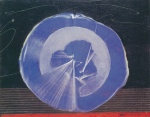Abstract
One of the most significant current discussions in World Literature is the dating of the Homeric poems. Although the Iliad and Odyssey are traditionally dated to the eighth century BCE, there are many testimonies since the Greek Archaic period connecting the editing of these texts with later times and authors, primarily with Peisistratus, the tyrant of Athens. Some sources add that Peisistratus was helped by a group of seventy or seventy-two wise men in order to accomplish this goal. The pattern of a 'powerful king' who calls together a group of seventy or seventy-two wise men to carry out a philological work, such as an edition or a translation, reminds us of the story of the Letter of Aristeas, in which Ptolemy II Philadelphus gathered in Alexandria the same number of wise men to translate the Jewish Torah into Greek. The similarity between the two accounts seems to indicate that there is a contamination between the process of editing two of the most important texts bodies of Western culture: the Homeric poems and the Bible. The aim of this paper is to go further into this theory, in an attempt to establish which of the two comes first, and to see if the pattern is traceable in other cultures with a foundational book, such as the Qur´an, the Persian Shahnameh, and Avesta.
Except where otherwise noted, the content of this site is licensed under a Creative Commons Attribution-ShareAlike 4.0 International (CC BY-SA 4.0).
Authors retain copyright of their work. The CC BY-SA 4.0 licence allows readers to copy and redistribute the material in any medium or format, and to remix, transform, and build upon the material for any purpose, even commercially, as long as the original author is credited and as long as any works that are derived from the original are distributed under the same terms.

